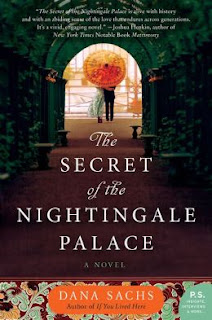 Poison Flower), Death Benefits, and Pursuit, the first recipient of the Gumshoe Award for best novel.
Poison Flower), Death Benefits, and Pursuit, the first recipient of the Gumshoe Award for best novel.He won the Edgar for The Butcher’s Boy, and Metzger’s Dog was a New York Times Notable Book. The Independent Mystery Booksellers’ Association included Vanishing Act in its “100 Favorite Mysteries of the 20th Century,” and Nightlife was a New York Times bestseller.
Metzger’s Dog was voted one of NPR’s 100 Killer Thrillers--Best Thrillers Ever. Strip was chosen as a New York Times Notable Crime Book for 2010, and The Informant was a New York Times Notable Crime Book for 2011 and won the Barry Award for Best Thriller, 2011. Poison Flower was chosen among Booklist’s Best Crime Novels of 2013.
Perry applied the Page 69 Test to his new novel, The Boyfriend, and reported the following:
I am a long-time fan of the test, and I think it works fairly well on my new novel, The Boyfriend. Jack Till, retired Los Angeles homicide detective now working as a P.I., has taken on an unusual case. He usually works the easy, simple cases that come his way, but this time he’s been hired by the parents of a murdered young woman. The LAPD has quietly given up on the case, because the victim had been working as an on-line escort, and so they haven’t been able to interview anyone, to identify the prints and DNA in her apartment, or even find anyone who knew her. Till has discovered, however, that several girls in similar circumstances have been killed in different cities, all of them strawberry blondes. He has also noticed that some of them advertised with photographs of themselves wearing a distinctive necklace. He has spent the night with one of them in Scottsdale, Arizona, then followed her to her house to see if the man who gave her the necklace is living with her.Learn more about the book and author at Thomas Perry's website and Facebook page.
On page 69, Till makes an unwelcome discovery. He looks around the outside of the house, knocks, and then looks in the windows. His detective experience makes him sense something is wrong. He uses a rock to break a window pane in the kitchen door, lets himself in, and finds the girl lying in her bed with a bullet hole in her temple and blood soaking the pillow. He knows the killer is only ahead of him by a few minutes. In other words, things are happening on 69, and I hope the reader wants to get on to page 70.
--Marshal Zeringue




























